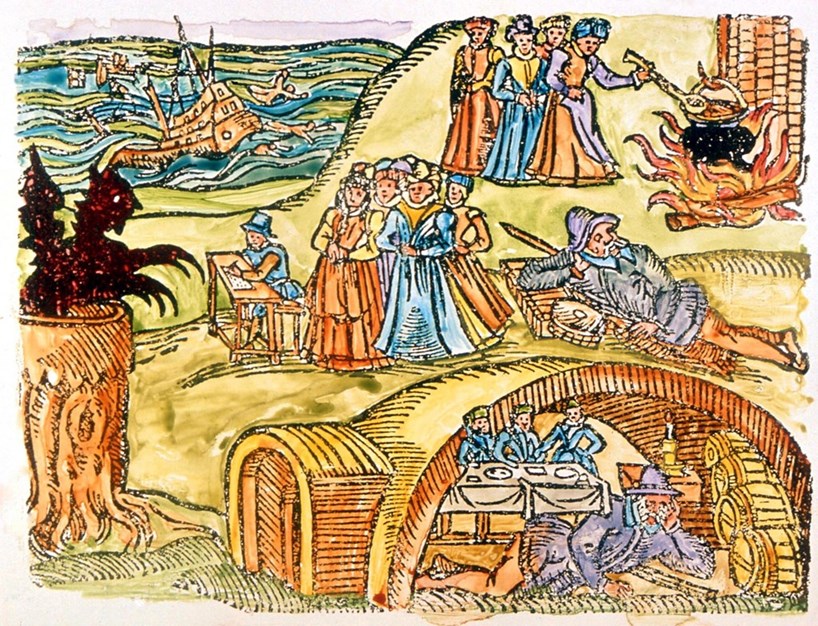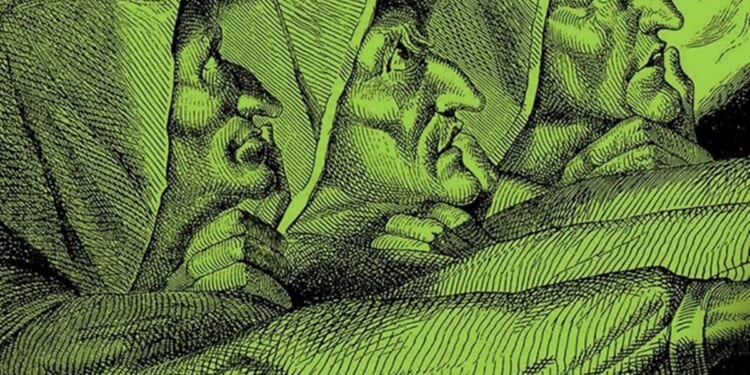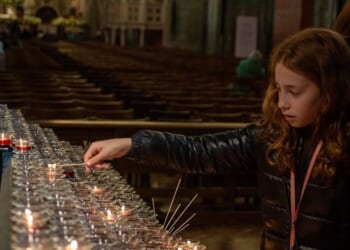WHEN the humorist Nicolas Bentley, crawling in the footsteps of Charles and Mary Lamb’s Tales from Shakespeare, wittily explained plots for the age of Harold Wilson and Edward Heath, he selected and illustrated 15 plays. The Scottish play came first, as a delineation of “the perils of the social climber”.
“At the opening of the play,” wrote Bentley in 1972, “three elderly women are trying to decide when and where they shall next meet.”
Fifty years before, in Ulysses, it was Stephen Daedalus who made the association of witches in Macbeth for Shakespeare “with the coming to the throne of a Scotch philosophaster with a turn for witchroasting”.
Even though there was no mention of witches in Shakespeare’s play, nor in one of the very few contemporary accounts of it, which Steven Veerapen quotes (when Simon Forman, in his journal for 20 April 1610, recorded Macbeth and Banquo as being saluted by three women faeries or nymphs), the association has stuck.
The Edinburgh publisher for this author’s second book about James VI and I offers a familiar (if uncredited) image for the dustjacket which reinforces this, using a 19th-century etching of Henry Fuseli’s famous 1783 painting The Three Witches.
The book is not about a single play, nor about Shakespeare, but covers cases of purported witchcraft from the Tudors to the Salem witch-hunt of 1692 in Massachusetts, many of which involved false allegations and petty local rivalries. The reach sometimes feels too broad.
 AlamyJames is depicted as a hero saved from a witchcraft-powered gunpowder plot in Newes from Scotland, a pamphlet that he endorsed (Lambeth Palace Library)
AlamyJames is depicted as a hero saved from a witchcraft-powered gunpowder plot in Newes from Scotland, a pamphlet that he endorsed (Lambeth Palace Library)
Veerapen centres on the interest that James had in the phenomenon of possession. In 1589, James had sailed to Denmark to fetch back his 14-year-old bride, whose sailing to Scotland had been thwarted by sudden storms and adverse weather that many Danes chose to attribute to witchcraft.
At the Renaissance court of Copenhagen, he could have met scholars as interested in predestination as in the occult. Denmark had had laws against witchcraft, if it caused death, since the 12th century. All this James may have had in mind when he wrote his Daemonologie in 1597.
England codified its laws against “conjurations” in the 16th century with the 1541-42 Bill of 33 Henry 8 c.8 and that of 1563 (5 Elizabeth 1 c.16). One of the first Acts of James’s reign in England in 1604 was against “Conjuration, Witchcraft and dealing with evil and wicked Spirits” (1 James 1 c.12).
There are few mistakes in a book that, while at times densely written (his account of the Gowrie plot of August 1600 is as complicated as the record of the event itself), will make much secondary material available to a general readership. Veerapen mistakenly identifies William Perry, a teenager exposed as a counterfeit, passing black urine and vomiting pins and needles, as the “Bilson Boy”. He came from the Staffordshire market town of Bilston.
Canon Nicholas Cranfield is the Vicar of All Saints’, Blackheath, in south London.
Witches: A king’s obsession
Steven Veerapen
Berlinn £20
(978–1–78027-952-7)
Church Times Bookshop £18
















